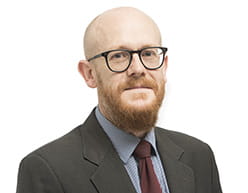Our towns and cities are veering towards greater resident and visitor tension. The story is all too common: The area around an established pub or club gets redeveloped to residential, the residents move in and then complain about the noise. So the pub or club gets closed down.
“It isn’t about drinking and music venues versus nine o’clock bedtimes, it’s actually about what kind of society are we moving towards and what are our towns and cities actually for?” This is how Trowers & Hamlins Partner, Christopher Plumley sums up the debate about the future of the night economy.
And it will only get worse as local authorities and developers look to satisfy the demand for more residential. While, at the same time, looking for ways to attract more visitors and workers back to towns and cities centres and boost local economies.
So, what is the solution?
The last two years have been devasting for the night-time economy, with some 86,000 jobs lost, according to the Night Time Industry Association (NTIA). Pre-pandemic, the sector contributed £46 billion to GDP.
There is some rebuilding to do, and if night-time uses are going to sit comfortably alongside residential, it needs to start with perception. Mention night-time economy, and immediate thoughts are of loud music and drinking.
However, the night-time economy is much broader than this, encompassing everything from music venues and clubs to theatres, cinemas, restaurants and a whole raft of new experiential leisure offerings.
And they all play an important role in the attractiveness and vibrancy of a place. Older venues, particularly independents, can be part of the cultural fabric and history of a town or city centre. They have historical significance and are a destination.
Tom Wainwright, Senior Associate at Trowers & Hamlins, points to the Cavern Club in Liverpool where The Beatles played: “Events happen in these places that get talked about for decades. They can also be safe spaces for marginalised communities.”
But these venues, which have been around for 20-30 years or more, have either been closed or are under threat because of complaints from new residents.
In Manchester, there was a case where a resident moved into an area near a famous music venue while it was closed during the pandemic. When restrictions lifted and it reopened, the resident complained about the noise.
“The irony is most of what attracts people to city centres in the first place is the idea of being close to the action, the shops, bars, clubs, restaurants but they are less keen when living next door to such venues,” says Wainwright.
In London, the 88-year-old Curzon Mayfair cinema was threatened with closure when a noise complaint was made by developers converting the offices above into residential. The cost of installing soundproofing was expected to be picked up by the cinema operator and risked putting them out of business. However, a petition by supporters and intervention from London Mayor Sadiq Khan saved the venue.
There are some protections under Agents of Change. For example, a residential development near an established music venue would have to include provisions against the noise.
At the time of the Curzon case in 2017, Khan promised that Agents of Change rules would be tightened up in the London Plan. And it was also something addressed in NPPF2 in 2018, but it still leaves a gap.
Could something similar to an ‘Asset of Community Value’ help? ACVs give a local community certain rights when a change of use is proposed. Wainwright suggests a ‘Cultural Asset of Community Value’ could be an equivalent.
But such an idea isn’t without problems. How do you decide which venues are worthy? And what happens if they go out of business, move or the venue gets re-leased as something different?
“The question is how far can you go to protect an individual venue?” asks Julien Allen, Partner at Trowers & Hamlins. “The counterargument you’re going to get with something like that is why are you trying to preserve things in aspic?”
It is a conundrum for those involved with regeneration. He says: “Successful real estate is about placemaking. We’ve seen too many examples of investment and development in places which all look snazzy and then become wastelands.”
So it’s a balancing act between preservation and new, which is particularly important when looking at how we revive our town and city centres post-pandemic.
“We have to keep asking ourselves what town and city centres are for, particularly when they are less about retail and more and more about cultural affirmations and cultural heritage,” says Plumley.
This means cultural space will be increasingly important, but he says you can’t look at night-time venues in isolation.
“It’s about having a holistic town centre strategy, looking at planning, different uses, economic drivers and how they relate to each other and influence social factors like crime rates,” says Plumley. “And once you build that, you’ve got a more cogent argument for protecting certain venues.”
Allen points out that planning should protect venues, planning authorities get to decide what to allow, and it can form part of an overall planning strategy.
The problem is there is something missing: “There is no real framework, structure or no clear legislation you can point to other than planning strategy planning decisions made on a case-by-case basis with conditions attached,” he says.
An answer could be to empower local authorities with specific rights to grant protections through licensing and planning.
Some areas have become cultural clusters, for example, the LGBTQ+ community-focused venues around Canal Street in Manchester and Vauxhall in London. And local authorities can help protect these areas.
By the same token, landlords with estates or clusters of assets can set terms in their leases to control certain behaviour and activities and protect their assets. But in the main, towns and cities have a mixture of ownerships and a more homogenous mix of uses rather than clusters.
This comes back to careful planning and taking a holistic view. Through the 80s, 90s and early 2000s, the focus was primarily on retail in towns and city centres. Then leisure was added to increase dwell, but it hasn’t always been blended to provide continual activity.
More recent examples show how a blend can work; Southwater in Telford is an example. It mixes community and business uses such as a library and convention centre with leisure such as ice skating, bowling and cinema, restaurants, bars and a music venue.
It is not dependent on just one type of use, there are different reasons to visit and dwell, and the different uses can feed off each other.
Night-time economy needs to play an important role in the future economy of our towns, but, as Plumley states, it’s a piece of bigger placemaking jigsaw.


